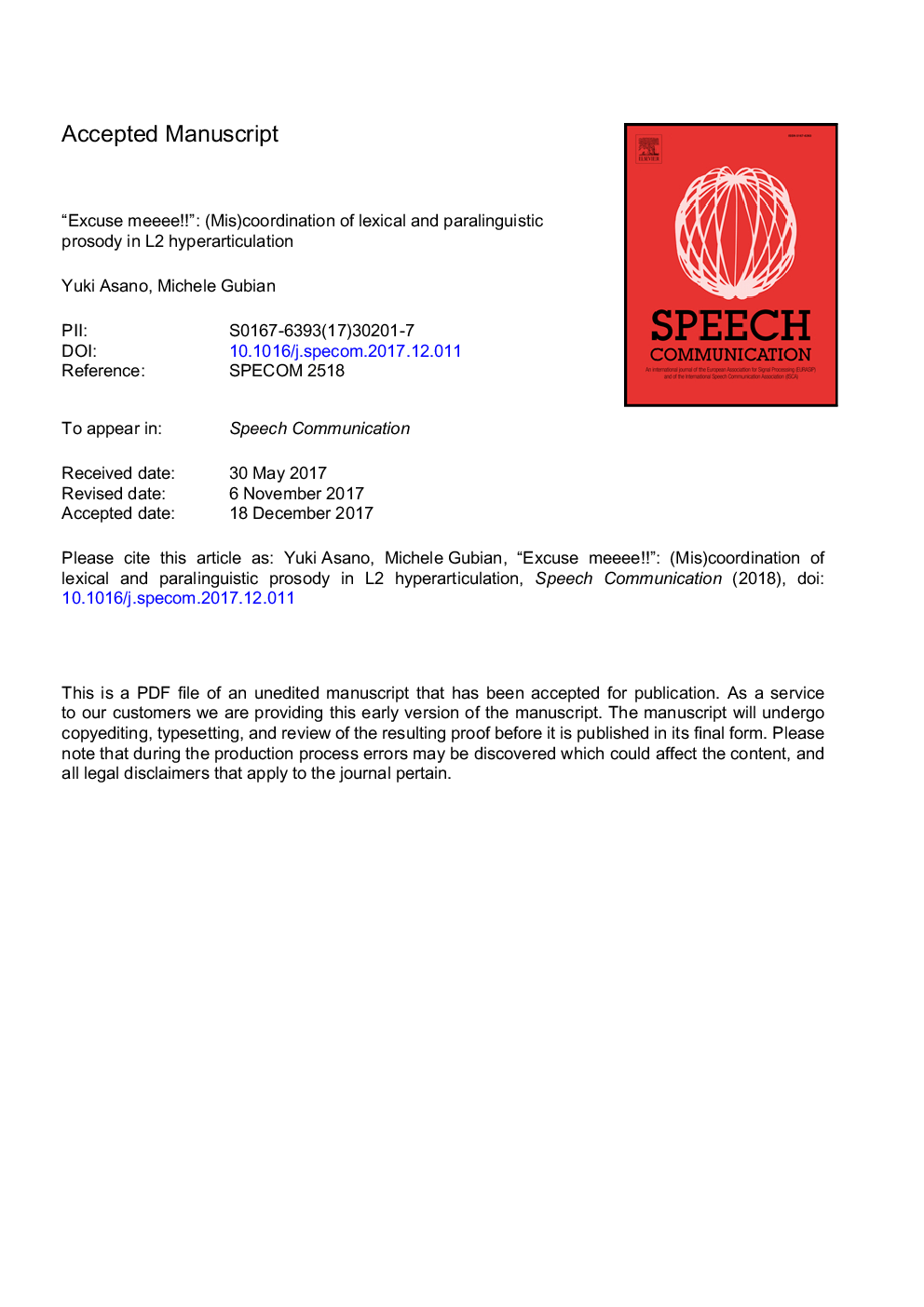| کد مقاله | کد نشریه | سال انتشار | مقاله انگلیسی | نسخه تمام متن |
|---|---|---|---|---|
| 6960569 | 1452001 | 2018 | 48 صفحه PDF | دانلود رایگان |
عنوان انگلیسی مقاله ISI
“Excuse meeee!!”: (Mis)coordination of lexical and paralinguistic prosody in L2 hyperarticulation
دانلود مقاله + سفارش ترجمه
دانلود مقاله ISI انگلیسی
رایگان برای ایرانیان
کلمات کلیدی
موضوعات مرتبط
مهندسی و علوم پایه
مهندسی کامپیوتر
پردازش سیگنال
پیش نمایش صفحه اول مقاله

چکیده انگلیسی
The present study investigates how first language (L1) and second language (L2) speakers coordinate lexical and paralinguistic prosody (lexically determined pitch accent and utterance-level intonation) in hyperarticulated speech. Modifications of F0 and segmental durations in repeated utterances were analyzed jointly using a novel method, Functional Principal Component Analysis (FPCA). By testing Japanese and German participants as L1 and as L2 speakers of the respective languages, the task elicited a situation in which L2 speakers had to handle F0 and segmental durations when these prosodic properties mainly carry a paralinguistic function in their L1, but carry a lexical one in their L2 or vice versa. Results show language-dependent and -independent modifications in hyperarticulated speech in both speaker groups. The language-dependent modifications were negatively transferred to the respective L2. The restriction of Japanese lexical pitch accent prevented Japanese participants from phonologically modifying F0 contours in L1 and L2, and German L2 speakers applied the German pitch accent rules in L2 Japanese utterances. Lexical rules outweighed paralinguistic rules in modifying prosody. At the same time, both German and Japanese speakers hyperarticulated the utterances with utterance-final lengthening, larger pitch range and higher peak. Furthermore, we argue that there may be different dominance orders of prosodic properties in Japanese and German according to which prosodic property was more likely to be modified in hyperarticulated speech. L2 speakers were more prone to change a more dominant prosodic property in their L1 to convey a paralinguistic meaning, i.e., segmental durations for Japanese and F0 for German. The findings are particularly noteworthy as the uttered words were highly frequent words of which L2 learners should have had sufficient L2 input before.
ناشر
Database: Elsevier - ScienceDirect (ساینس دایرکت)
Journal: Speech Communication - Volume 99, May 2018, Pages 183-200
Journal: Speech Communication - Volume 99, May 2018, Pages 183-200
نویسندگان
Yuki Asano, Michele Gubian,